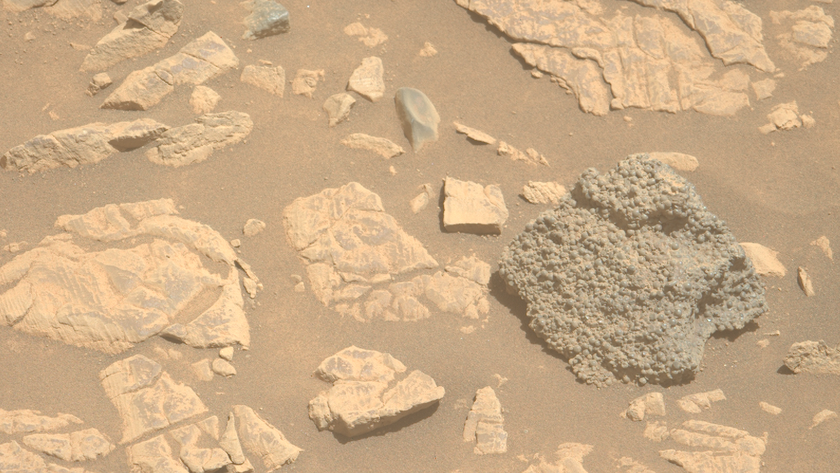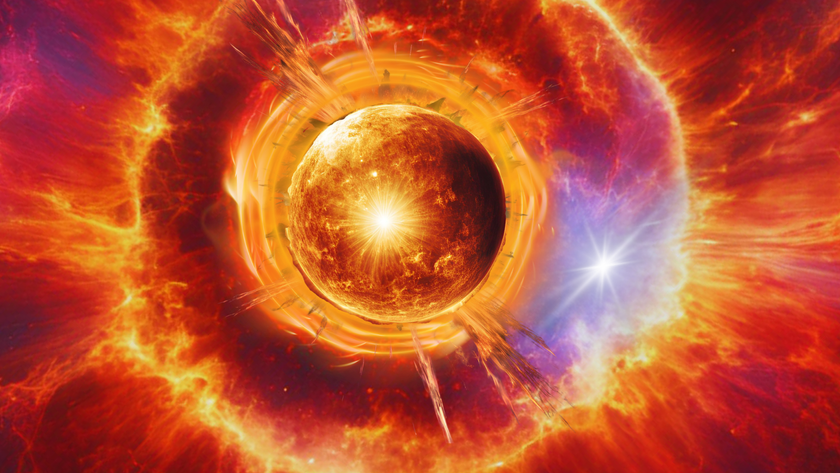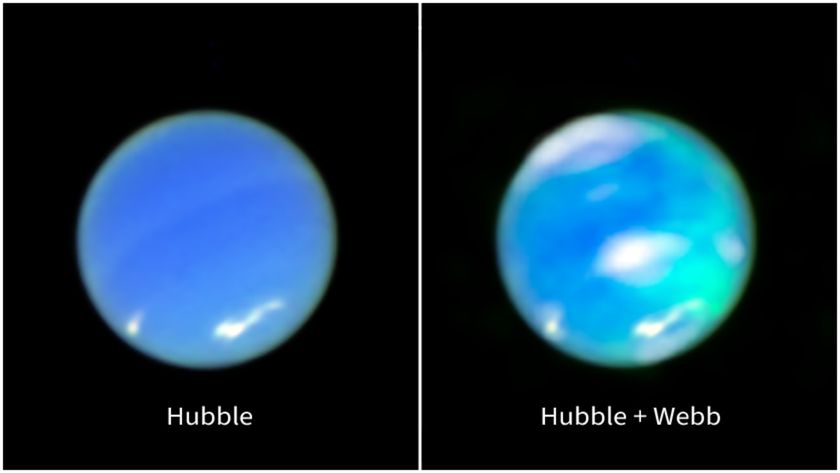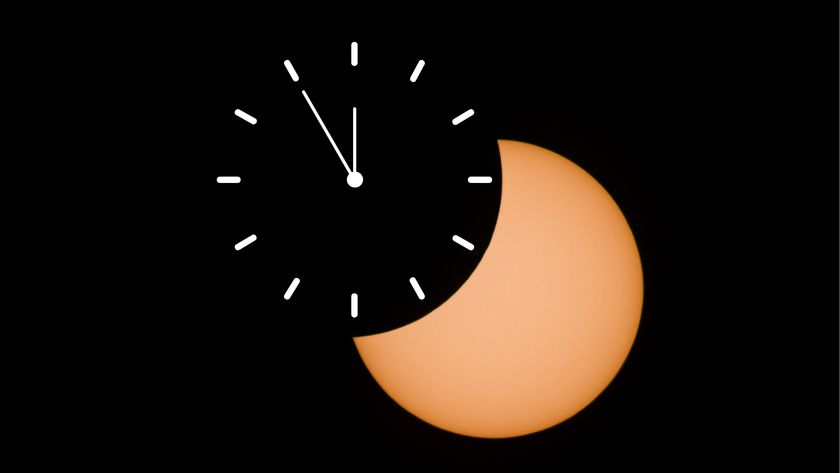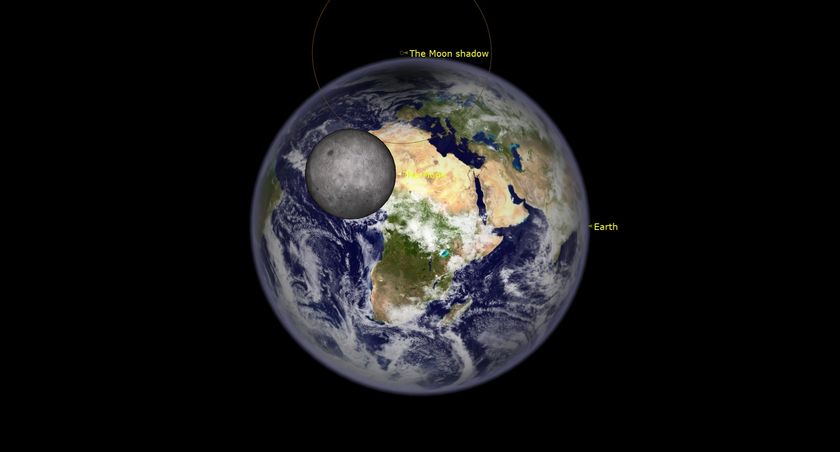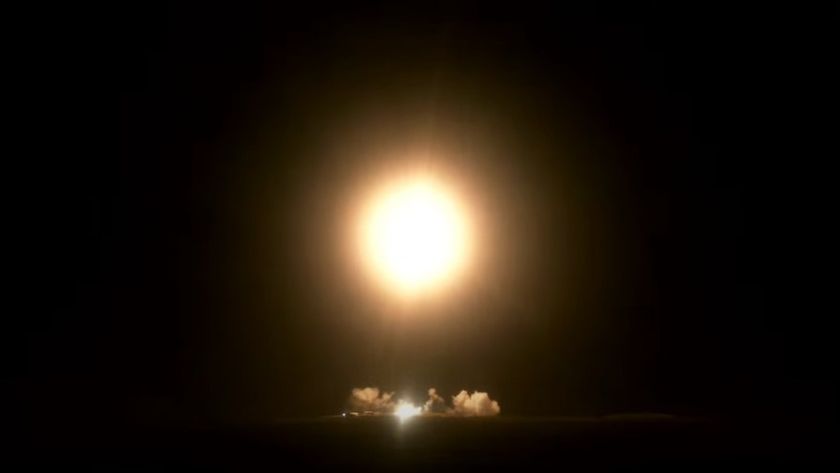Going Back to the Moon: Q&A with Planetary Scientist Paul Spudis

If you want to chat about the past, present and future of lunar exploration, Paul Spudis is your go-to guy. He is one of the best-known scientists advocating for a manned return to Earth's celestial neighbor, not only to tap its resources but also to use that craggy, cratered world to help create a space transportation system.
Spudis and the moon have long been in gravitational lock. He was deputy leader of the science team for the Clementine lunar probe, a joint mission of NASA and the Pentagon, and served as principal investigator of Mini-SAR, an imaging radar experiment on India's Chandrayaan-1 moon mission.
As a team member of a similar experiment aboard NASA's Lunar Reconnaissance Orbiter, Spudis is a leading expert on the moon's stores of water ice and believes these deposits could support a future permanent human presence on the satellite. [Latest Moon Photos from NASA's Lunar Reconnaissance Orbiter]
In his book "The Once and Future Moon" (Smithsonian Institution Press, 1996), Spudis backs his case for using the moon to learn how to live and work productively in space.
Spudis also has experience in space policy. For example, in 1991, Spudis served as a member of a White House committee known as the Synthesis Group. He was also a member of the 2004 Presidential Commission on the Implementation of United States Space Exploration Policy.
Today, Spudis is a senior staff scientist at the Lunar and Planetary Institute in Houston. Space.com caught up with him last month at the Lunar and Planetary Science Conference in The Woodlands, Texas, to discuss the promise and potential of lunar exploration.
Space.com: How do you characterize what we know about the moon today?
Get the Space.com Newsletter
Breaking space news, the latest updates on rocket launches, skywatching events and more!
Paul Spudis: There's still a lot about the moon that we don't know. It's a more interesting, complex and subtle world than we had appreciated. We are at the start of a new era of lunar science made possible by data collected from a fleet of missions that occurred over the past decade or so. It's revolutionized our understanding of how things work there.
Space.com: Are we feeding that data into new questions, new missions?
Spudis: Absolutely. The classic example is the ice-on-the-moon issue. We've been debating that forever — since [the] Apollo [program], really — and now, it has been confirmed. Still, we don't know where it occurs — its concentration and physical form. What is its history? Where did it come from? [NASA's 17 Apollo Moon Missions in Pictures]
The big surprise is that there is water in the interior of the moon. The dogma for years was that the moon was bone-dry and never had any water. Now, we're finding that the deep interior, hundreds of kilometers below the surface — at least 3 [billion] to 4 billion years ago, there was water. So all that is new and surprising information.
Space.com: The new big player in lunar exploration is China. What's your view on what the Chinese intend to do at the moon?
Spudis: I have a different take on the Chinese space program than most observers. One thing to always keep in mind is that China's space program is run by their military. And I think their agenda is cislunar space control.
China's Chang'e 2 spacecraft moved in and out of lunar orbit, went to an L-point [a gravitationally stable Lagrange point], loitered there, left and intercepted asteroid Geographos. All of that activity is classic space control. If you combine these activities with their anti-satellite warfare experience, it's pretty clear what they are up to. I think that's their real agenda.
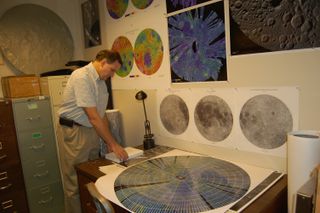
Space.com: But China is clearly doing "good" lunar exploration, no?
Spudis: The lunar science is strictly window dressing, but it's good stuff. They are creating capability that's returning interesting information about the moon.
Space.com: And they are pressing forward on a lunar sample-return mission, eyeing a 2017 target time.
Spudis: I'm not sure where they are going with the sample-return mission. My suspicion is that they will probably pick a site somewhere in the maria, the dark, smooth lowlands of the moon, which would be a nice safe landing spot. The landing itself would be a major milestone for them. [Greatest Moon Missions of All Time]
Space.com: Aren't they sharpening a variety of technical skills at the moon?
Spudis: It is interesting that, unlike the Soviet Union's Luna sample-return missions that shot their samples directly back to Earth, the Chinese are going to rendezvous in lunar orbit with their return vehicle and then rocket those samples back to Earth. That is totally unnecessary. So it's clear to me that they adopted that mission profile as part of a certification of an architecture for a human mission. That's their real agenda here. I think by establishing the capability to have a cislunar presence, China has developed a lot of options.
I'm very impressed with their resilience and determination. They clearly have a vision, and they are pursuing it.
Space.com: Taking a long-term look, what do you see as a key step for using the moon?
Spudis: I've been advocating that we go to the lunar poles and start mining water to create a logistics depot — a fuel depot on the moon. That enables the creation of a permanent space transportation system.
Space.com: Is the United States capable of a sustained human presence in space?
Spudis: I think we can. It won't be Apollo-like … Everyone keeps waiting for the precipitating moment where the financial floodgates open and NASA will be showered with money. That's not going to happen. But that's where NASA is sort of at today — awaiting the money.
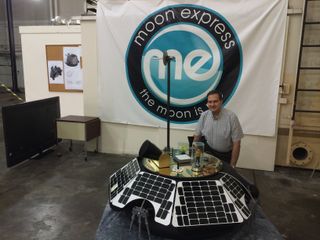
The challenge is to craft a program that keeps the rate of spending under a certain level and that has recurring and frequent milestones of success. That's a program I feel is sustainable.
It's not about putting a person on a rocket; sending them into the wild, black yonder; doing a stunt; and then coming home to a ticker-tape parade. It's about incrementally and gradually increasing our levels of human reach into space. And the immediate zone of interest is cislunar — which includes the lunar surface — because that's what we can get to. That's the next theater of operation.
Space.com: You are also involved in private-sector interests in moon exploration.
Spudis: My work with [Google Lunar X Prize competitor] Moon Express is to help them plan and execute a lunar surface mission that returns both scientific and resource assessment data. Our current efforts are focused on the initial demonstration landing, which will put a modest payload on the moon. Our objectives are to collect data relevant to understanding the lunar water cycle.
Space.com: And at the moon, what's the mix of robotics and humans?
Spudis: The idea is to lead with robotic assets to begin mining lunar water; humans [will] return to the moon when we are ready. Let the robotic spacecraft do preparatory work for humans. The dirty work of establishing an outpost and mining the moon can be done by remote control. Don't waste the time of astronauts digging a hole on the moon. You want them to do the high-level, expert, knowledge-based tasks. Ultimately, robots and people [will] work together to develop the resources of the moon.
That's a different approach to the way NASA has conducted robotic spaceflight in the past. Previously, robotic precursors gathered information to prepare for later human science missions. This time, robots lay in new physical infrastructure on the moon, followed later by people and robots working together. This way, we gradually expand our sphere of operations to the moon and, eventually, to the planets.
Leonard David has been reporting on the space industry for more than five decades. He is former director of research for the National Commission on Space and is co-author of Buzz Aldrin's 2013 book "Mission to Mars – My Vision for Space Exploration," published by National Geographic with a new updated paperback version to be released this May.Follow us @Spacedotcom, Facebook or Google+. Originally published on Space.com.
Join our Space Forums to keep talking space on the latest missions, night sky and more! And if you have a news tip, correction or comment, let us know at: community@space.com.

Leonard David is an award-winning space journalist who has been reporting on space activities for more than 50 years. Currently writing as Space.com's Space Insider Columnist among his other projects, Leonard has authored numerous books on space exploration, Mars missions and more, with his latest being "Moon Rush: The New Space Race" published in 2019 by National Geographic. He also wrote "Mars: Our Future on the Red Planet" released in 2016 by National Geographic. Leonard has served as a correspondent for SpaceNews, Scientific American and Aerospace America for the AIAA. He has received many awards, including the first Ordway Award for Sustained Excellence in Spaceflight History in 2015 at the AAS Wernher von Braun Memorial Symposium. You can find out Leonard's latest project at his website and on Twitter.


